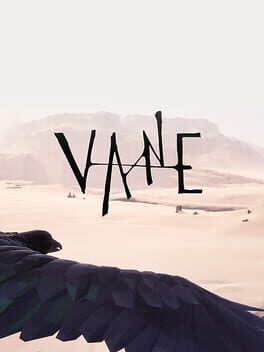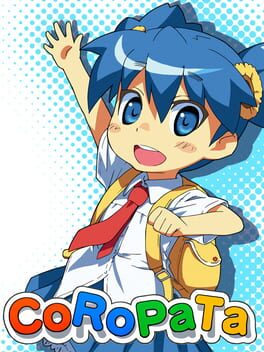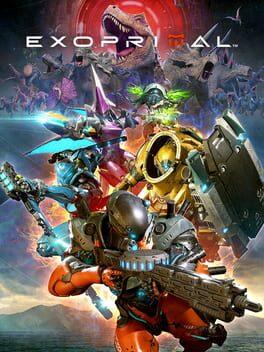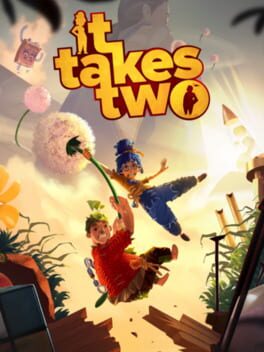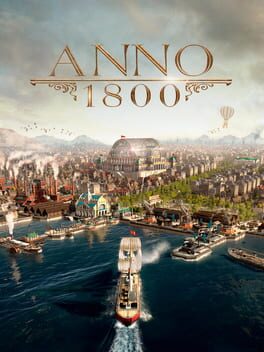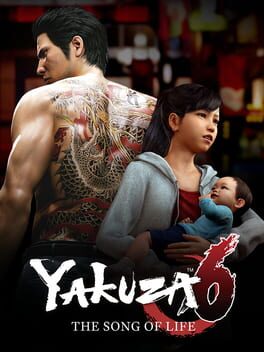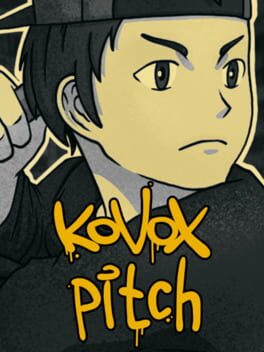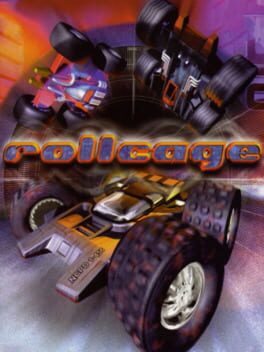BeachEpisode
2016
\*WHO ARE YOU ?*
My comfort. Ever since I learned how to emulate, I've returned to this title with semi-regularity just so I can trip through it again.
\*DON'T COME ANY CLOSER !*
Rez is like if Char Davies' 1995 art installation called "Osmose" was a shmup. Experimental explorations through 3D spaces that, while primitive, are teaming with vibes, life, and anthropologic influences. There's such a grit to it all, it's like decoding the earth's DNA, weaving it into strings to pluck, and playing along to the universe's heartbeat. Did you know that all the data on Rez's PS2 disk amounted to 91mb? That's how much a soul weighs.
\*WHY ?*
You could definitely say it peaks early by starting with the best level - its music is incredible, the escalation in instrumentation and aesthetic complexity is unmatched, you can't power up enough to become one of the forms with annoying sound effects. It's worth playing the slightly less spectacular middle levels just to eventually hear Fear is the Mindkiller again. Never dull, always reinventing itself and finding new ways to overwhelm the player, enemies and patterns that never show up across levels - it's a journey.
The Area X level they introduced for the Rez Infinite port is welcome optional content that isn't hurting anything. Many people love it, I'm kinda nonplussed. Empty void of Unreal Engine particles and none of the progressive trance choons that keep my heart bumpin.
\*AREN'T YOU AFRAID ?*
Still about as visually spectacular as games ever got!!! This is up there with Zone of the Enders 2 for Apex Graphics.
\*SAVE ME .....*
My comfort. Ever since I learned how to emulate, I've returned to this title with semi-regularity just so I can trip through it again.
\*DON'T COME ANY CLOSER !*
Rez is like if Char Davies' 1995 art installation called "Osmose" was a shmup. Experimental explorations through 3D spaces that, while primitive, are teaming with vibes, life, and anthropologic influences. There's such a grit to it all, it's like decoding the earth's DNA, weaving it into strings to pluck, and playing along to the universe's heartbeat. Did you know that all the data on Rez's PS2 disk amounted to 91mb? That's how much a soul weighs.
\*WHY ?*
You could definitely say it peaks early by starting with the best level - its music is incredible, the escalation in instrumentation and aesthetic complexity is unmatched, you can't power up enough to become one of the forms with annoying sound effects. It's worth playing the slightly less spectacular middle levels just to eventually hear Fear is the Mindkiller again. Never dull, always reinventing itself and finding new ways to overwhelm the player, enemies and patterns that never show up across levels - it's a journey.
The Area X level they introduced for the Rez Infinite port is welcome optional content that isn't hurting anything. Many people love it, I'm kinda nonplussed. Empty void of Unreal Engine particles and none of the progressive trance choons that keep my heart bumpin.
\*AREN'T YOU AFRAID ?*
Still about as visually spectacular as games ever got!!! This is up there with Zone of the Enders 2 for Apex Graphics.
\*SAVE ME .....*
2019
If Vane were to be in its entirety its opening act fully fleshed out - I'd have a new favourite game. An hour of pottering over a vast pearlescant desert where what remains of a civilisation that hasn't been devoured by the earth's crust has the gentle presence of a great elder, sleepily telling their tale. Pulled in different directions by faint shimmers of glass and specks of stone in the distance - as a crow, that's all the provocation to explore you need in this mercifully waypoint-free world. It felt like a game that was finally learning the right lessons from Thatgamecompany and Team Ico; the flatly-shaded polygonal artstyle age-wearing the details and lending a sense of greater mystery to the windswept world, of which the player must take great care and attention in navigating because it's grand architects weren't designing a platformer game stage to collect coins in. To be present is to be prayerful.
The latter chapters give some distinctly diminishing returns as their gameplay shifts to more functionally grounded puzzlesolving. Not without their standout moments, it was therepeutic to scream at an orb.
Look at the way it displaces polygons for a timelapse effect!! This world shakes and breaks as you poke and meander, its wonderful stop-motion environmental unbuilding quirks lend Vane the feeling of a world barely held together by its 3D-printed infill. Not to make excuses for the game, but this was a case where I didn't mind the handful of glitches I encountered during my playthrough. In a game that takes great pleasure in ripping itself to shreds, veering itself wildly off course in a kind of implicit panic, I'd almost expect its rulebook to skip a page or two in the fray. Sometimes you clip out of the world, crash your console, and you just have to think "cool".
Like all the best art, Vane can be brilliant and subversive and confusing and frustrating. Definitely, the best of the Flower/Journey derivatives because it genuinely feels like it wants to carry their legacy like a true apprentice - but the game is sadly just too disjointed for it to stick the landing for me.
The latter chapters give some distinctly diminishing returns as their gameplay shifts to more functionally grounded puzzlesolving. Not without their standout moments, it was therepeutic to scream at an orb.
Look at the way it displaces polygons for a timelapse effect!! This world shakes and breaks as you poke and meander, its wonderful stop-motion environmental unbuilding quirks lend Vane the feeling of a world barely held together by its 3D-printed infill. Not to make excuses for the game, but this was a case where I didn't mind the handful of glitches I encountered during my playthrough. In a game that takes great pleasure in ripping itself to shreds, veering itself wildly off course in a kind of implicit panic, I'd almost expect its rulebook to skip a page or two in the fray. Sometimes you clip out of the world, crash your console, and you just have to think "cool".
Like all the best art, Vane can be brilliant and subversive and confusing and frustrating. Definitely, the best of the Flower/Journey derivatives because it genuinely feels like it wants to carry their legacy like a true apprentice - but the game is sadly just too disjointed for it to stick the landing for me.
Pretty great season honestly. The Italo map is up there with the strongest the game has ever had, I don't even mind that I'm playing it on max settings and hitting 40fps because it's worth the lumens. Not keen on mods as someone who thinks games keen out too much on firearms as is, and all its implementation here really accomplishes is making half of the sniper rifle drops useless. The medallions are cool because they’re something of a bluffing game. Is this dude carrying the medallions around because he’s a huge badass who can handle multiple players knowing where he is on the map, or is he just an incompetent iPad 9 year old being kept alive by the stock market value of Peter Griffin Coin. I know the additions of Rocket Racing, Lego Fortnite & Festival are technically counted as entirely new standalone games but it's funnier to consider them as just little distractions/cooldowns for after you and your friends have wrapped up a Battle Royale sesh. Like when it comes down to it the Harmonix skeleton crew created a gamemode that is no better than an Only Up obstacle course map. Rly fun, I've been strapped into the Tim Sweeney metaverse electric chair since 2017 and I don't see myself breaking free any time soon, why should I when the Butter Barn's got butter plate specials that'll treat ya right?
2022
I really do hate feeling that I’m undervaluing effort. If anything, I should probably have just played a fantranslation of the original Live A Live, so that I could feel a little more as though this game’s web of genre anthologism was particularly formally impressive or functionally experimental. It’s a little personally embarrassing how much slack I’m willing to give older gens for breaking their spines over ambitious systems I take for granted nowadays, and narratives I’d find quaint in anything released now. I want to lay blame on Octopath’o’vision more than anything.
Live A Live’s cool, I won’t deny - the individual cinematic reverence to which each of these chapters are framed, the unique ways their characters express themselves thru bespoke mechanics like Pogo’s rudimentary crafting & hunting, Shifu’s already capped level & disciple training, Akira’s overworld psi abilities… I just don’t think there’s enough meat on any of this game’s bones for me to feel strongly either way about any of the stories, let alone for the final act to even feel self-justified that its cast have the capability to act as convincing anti-hate thesis statements - and not simply an extension of what Live A Live always does; falling back to the motions of genre.
Playing through Square’s library has made me feel incredibly assured in their ambitions and creativity, kindling much of what I find so mysterious and evocative about the JRPG genre. Games that spin themselves wildly into their own neuroses and bloom into an orchard of mechanics and character dynamics we’re today still only barely reaching similar heights of. To me. Live A Live feels like a demo disk or something of that mission statement, glimpses into their process but, too brief for hooks to really set in.
Live A Live’s cool, I won’t deny - the individual cinematic reverence to which each of these chapters are framed, the unique ways their characters express themselves thru bespoke mechanics like Pogo’s rudimentary crafting & hunting, Shifu’s already capped level & disciple training, Akira’s overworld psi abilities… I just don’t think there’s enough meat on any of this game’s bones for me to feel strongly either way about any of the stories, let alone for the final act to even feel self-justified that its cast have the capability to act as convincing anti-hate thesis statements - and not simply an extension of what Live A Live always does; falling back to the motions of genre.
Playing through Square’s library has made me feel incredibly assured in their ambitions and creativity, kindling much of what I find so mysterious and evocative about the JRPG genre. Games that spin themselves wildly into their own neuroses and bloom into an orchard of mechanics and character dynamics we’re today still only barely reaching similar heights of. To me. Live A Live feels like a demo disk or something of that mission statement, glimpses into their process but, too brief for hooks to really set in.
2009
If you've spent any time in the early to mid 2010's browsing games forums, you've likely seen a handful of gifs from Coropata. It's certainly attention-grabbing - a cute and expressive airhead character, sweet pastel colour scheme, many sets of sprite animations to match all of the things that she can interact with and respond to. It's all very fluffy and endearing. It released as a Japan-only title on the DS but very recently recieved an English localisation on the PC, which was a nice surprise.
I've been chipping away at Coropata piecemeal over the past year or so during work lunch breaks on my phone, which is probably the ideal way to play the game really. It's a level-based physics puzzle game akin to something like Fantastic Contraption, but your task is more focused on completing a rube-goldberg machine with whatever few objects have been made available to you, all to assist Himawari on her errands. The rub here is that the difficulty curve is comically steep, and not necessarily for any sense of mastery of the game's own logic, your successes are forged through trial and error - repeatedly micro-adjusting objects a pixel to the side until the ball deems you worthy and reluctantly goes into the goal. It truly is just shoddy physics work here, and it makes proceedings so much more frustrating than they need to be. You could move a wooden plank on the complete opposite side of the board a smidge, and it'll make a seesaw it never even touches swing differently.
So, why did I stick with it through to the end? It doesn't seem like many people do. At the time of writing I wholeheartedly could not find a single guide for solutions, the Steam community screenshots don't even go any further than chapter 2... Like games similar to Fantastic Contraption, you just make progress until you can't any more, when the difficulty counteracts however gratifying it is. Coropata is a hard recommend because it’s clearly not worth it for many people.
Besides being adowable, I just think this game has a pretty good sense of humour about its own absurd difficulty all things considered, sometimes I found myself laughing through disbelief when a solution snaps to mind and it plays out like a Harpo Marx sketch. Coropata has a system where Himawari's mood and energy levels effect how she interacts with certain objects, there's something very special about having to construct a complex winding Mousetrap mechanism all to drop a steel ball on her head from a massive height so she becomes too pissed to eat candy and kicks it into a goal instead.
Not a recommendation by any means, but if you were ever curious to play The Game Where the Blue Haired Girl Eats Shit & Dies, you aren’t missing much by finding a rom and thumbing through the Japanese DS version. The story isn’t much to write home about, and gets disappointingly leary from the mid point - but the final note it ends on is genuinely upliftingly sweet.
I've been chipping away at Coropata piecemeal over the past year or so during work lunch breaks on my phone, which is probably the ideal way to play the game really. It's a level-based physics puzzle game akin to something like Fantastic Contraption, but your task is more focused on completing a rube-goldberg machine with whatever few objects have been made available to you, all to assist Himawari on her errands. The rub here is that the difficulty curve is comically steep, and not necessarily for any sense of mastery of the game's own logic, your successes are forged through trial and error - repeatedly micro-adjusting objects a pixel to the side until the ball deems you worthy and reluctantly goes into the goal. It truly is just shoddy physics work here, and it makes proceedings so much more frustrating than they need to be. You could move a wooden plank on the complete opposite side of the board a smidge, and it'll make a seesaw it never even touches swing differently.
So, why did I stick with it through to the end? It doesn't seem like many people do. At the time of writing I wholeheartedly could not find a single guide for solutions, the Steam community screenshots don't even go any further than chapter 2... Like games similar to Fantastic Contraption, you just make progress until you can't any more, when the difficulty counteracts however gratifying it is. Coropata is a hard recommend because it’s clearly not worth it for many people.
Besides being adowable, I just think this game has a pretty good sense of humour about its own absurd difficulty all things considered, sometimes I found myself laughing through disbelief when a solution snaps to mind and it plays out like a Harpo Marx sketch. Coropata has a system where Himawari's mood and energy levels effect how she interacts with certain objects, there's something very special about having to construct a complex winding Mousetrap mechanism all to drop a steel ball on her head from a massive height so she becomes too pissed to eat candy and kicks it into a goal instead.
Not a recommendation by any means, but if you were ever curious to play The Game Where the Blue Haired Girl Eats Shit & Dies, you aren’t missing much by finding a rom and thumbing through the Japanese DS version. The story isn’t much to write home about, and gets disappointingly leary from the mid point - but the final note it ends on is genuinely upliftingly sweet.
2023
There's a spark in here that promises more than it delivers but I want to nourish & nurture it until the debt is paid.
It really is a few adjustments away from something I'd luvv, but Exoprimal finds itself utterly lost at sea in an attempt to copy the other Games As A Service bigboys. Progressing the story and blossoming the enemy pool alongside a predetermined amount of matchmakes sounds fine in theory, but it essentially means that it takes about thirty sessions before the game graces you with the challenge and variety it so desperately needs in the early half. Even with my saintly patience I considered dropping it at multiple points, which is kind of a shame, the later boss battles are great fun! With more of a focus on co-op boss battles and the large scale PvE encounters it fitfully teases u with, there'd be something here. With this being a fully-fledged Capcom lunch & dinner, I had hopes in the leadup to release that there would be some Lost Planet 2 DNA in here, but alas!!!! Gone are the days of densely curated linear mission structures, matchmake and pray the randomly choreographed instance permits you a good time. Your moneys no good here we only accept dinobux. Ultimately I think I'm being kinder than I should because Exoprimal fell out of gamepass and it's fun on the most baseline level of human experience to hold left click and watch hitboxes disappear.
I think the most gutting thing is knowing that it's a GaaS title with "Content Coming Soon" which I can very safely and sagely forecast just means "we didn't receive enough battle pass subscriptions for season 1, & have decided to terminate service before we even get the chance to add content that really lets the strengths of the gameplay shine".
Annoying that they came so close but I liked what it offers!!!
It really is a few adjustments away from something I'd luvv, but Exoprimal finds itself utterly lost at sea in an attempt to copy the other Games As A Service bigboys. Progressing the story and blossoming the enemy pool alongside a predetermined amount of matchmakes sounds fine in theory, but it essentially means that it takes about thirty sessions before the game graces you with the challenge and variety it so desperately needs in the early half. Even with my saintly patience I considered dropping it at multiple points, which is kind of a shame, the later boss battles are great fun! With more of a focus on co-op boss battles and the large scale PvE encounters it fitfully teases u with, there'd be something here. With this being a fully-fledged Capcom lunch & dinner, I had hopes in the leadup to release that there would be some Lost Planet 2 DNA in here, but alas!!!! Gone are the days of densely curated linear mission structures, matchmake and pray the randomly choreographed instance permits you a good time. Your moneys no good here we only accept dinobux. Ultimately I think I'm being kinder than I should because Exoprimal fell out of gamepass and it's fun on the most baseline level of human experience to hold left click and watch hitboxes disappear.
I think the most gutting thing is knowing that it's a GaaS title with "Content Coming Soon" which I can very safely and sagely forecast just means "we didn't receive enough battle pass subscriptions for season 1, & have decided to terminate service before we even get the chance to add content that really lets the strengths of the gameplay shine".
Annoying that they came so close but I liked what it offers!!!
2021
Josef Fares is a man filled with an unbridled passion for co-op games, and I truly appreciate his presence in the triple-a space. A Way Out may have felt a little hamstrung by its Telltale-y filmic “your choices matter!!” structure - it ends up working out pretty well in that game, but all throughout were glimpses into small, fun 2-player mechanical concepts in the interactive moments in-between the cutscenes.
His excitement to explore the possibilities of co-op is on full display in It Takes Two’s rambling, playful adventure, repeatedly plunging the two players into unique scenarios with asymmetrical toolsets.
The game features constant genre and mechanic switching. Levels boasting third-person shooting, top-down diablo-esque combat, flying, sailing, karting, and all kinds of bizarre puzzles in-between; reinforced by how they simply never feel under-developed and are tossed away the second they wear out their welcome. Many of this can be chalked up to EA funding, I suppose; many of the ideas this game conjures and then swiftly casts aside would essentially make up the sole backbone of a smaller-scale indie title. It’s consistently inconsistent. A driving force in our playthrough was an element of excitement to simply see what the game has in store for us next.
Very charming how the game is a hulking toybox, absolutely littered with interactive elements and versus minigames. It truly has everything, from a fully-fledged chess board, to musical chairs.
I say that because the narrative certainly wasn’t a driving factor for me, personally!! Cody and May’s bougie divorce story feels the need to throw a child in the mix for any sense of jeopardy before wrapping up with a neat, tidy and highly derivative bow. I simply sleep. The writing is, on the whole, very unremarkable - unfunny, a frankly unbelievably high “wooaaaah” count.
Very very gorgeous 2 look @ though. Whenever they’re not in photorealistic mode with Cody’s Seth McFarlane looking ass, it’s always a stunningly realised Honey I Shrunk The Kids environment. A significant portion of my playtime was spent boring the pants off my co-op partner as I stared doe-eyed at everything. From the sweeping picturesque vistas to the minute graphical details like specular maps and shaders to the unique illustrations adorning every corner. So sikk!!!! The character mo-cap feels like a blunder imo. It looks fine on the human characters where the discerning gamer eye almost expects it to look like shit, but the problem is expounded with the more cartoonishly proportioned characters. Never is it worse than with Fares’ own Dr Hakeem character, a fiendishly fucked talking book that looks and acts like a Facerig preset. Cody and May just seem like theme park mascot costumes with faces that are barely permitted to emote. Hand-touched stylisation with cartoony characters goes a long way - squash and stretch some more. The motion data should be a reference point, not the final product.
Anyway, idk. A very cool game. It’s nice to play a co-op that is oodles more creative than a looter shooter. I like its purchase model where only one person has to buy the title, allowing the other player to download the full client for free - spitting in the face of remote play. More of that, please.
His excitement to explore the possibilities of co-op is on full display in It Takes Two’s rambling, playful adventure, repeatedly plunging the two players into unique scenarios with asymmetrical toolsets.
The game features constant genre and mechanic switching. Levels boasting third-person shooting, top-down diablo-esque combat, flying, sailing, karting, and all kinds of bizarre puzzles in-between; reinforced by how they simply never feel under-developed and are tossed away the second they wear out their welcome. Many of this can be chalked up to EA funding, I suppose; many of the ideas this game conjures and then swiftly casts aside would essentially make up the sole backbone of a smaller-scale indie title. It’s consistently inconsistent. A driving force in our playthrough was an element of excitement to simply see what the game has in store for us next.
Very charming how the game is a hulking toybox, absolutely littered with interactive elements and versus minigames. It truly has everything, from a fully-fledged chess board, to musical chairs.
I say that because the narrative certainly wasn’t a driving factor for me, personally!! Cody and May’s bougie divorce story feels the need to throw a child in the mix for any sense of jeopardy before wrapping up with a neat, tidy and highly derivative bow. I simply sleep. The writing is, on the whole, very unremarkable - unfunny, a frankly unbelievably high “wooaaaah” count.
Very very gorgeous 2 look @ though. Whenever they’re not in photorealistic mode with Cody’s Seth McFarlane looking ass, it’s always a stunningly realised Honey I Shrunk The Kids environment. A significant portion of my playtime was spent boring the pants off my co-op partner as I stared doe-eyed at everything. From the sweeping picturesque vistas to the minute graphical details like specular maps and shaders to the unique illustrations adorning every corner. So sikk!!!! The character mo-cap feels like a blunder imo. It looks fine on the human characters where the discerning gamer eye almost expects it to look like shit, but the problem is expounded with the more cartoonishly proportioned characters. Never is it worse than with Fares’ own Dr Hakeem character, a fiendishly fucked talking book that looks and acts like a Facerig preset. Cody and May just seem like theme park mascot costumes with faces that are barely permitted to emote. Hand-touched stylisation with cartoony characters goes a long way - squash and stretch some more. The motion data should be a reference point, not the final product.
Anyway, idk. A very cool game. It’s nice to play a co-op that is oodles more creative than a looter shooter. I like its purchase model where only one person has to buy the title, allowing the other player to download the full client for free - spitting in the face of remote play. More of that, please.
2016
Replayed for the first time since launch to see what the famous Updates were about. They must be good, people never stopped bringing them up every time Hello Games added a new type of fern.
All these years and the game is still an exercise in prefab asset tourism - once the novelty wears thin and the artifice sets in, you come to realise that all of the tension comes in the form of anticipating what colour the trees are going to be on the planet you're leisurely approaching. No Man's Sky does about as poor a job of conveying information to the player as Destiny 2. This thing is now a hulking behemoth of retrofitted mechanics that gracelessly clash together, and poorly explain themselves with a haphazard collage of tutorials and tooltips leaving the first thirty minutes of this game with the UI looking like fucking a ransom note. Way to make space travel feel like homework.
All these years and the game is still an exercise in prefab asset tourism - once the novelty wears thin and the artifice sets in, you come to realise that all of the tension comes in the form of anticipating what colour the trees are going to be on the planet you're leisurely approaching. No Man's Sky does about as poor a job of conveying information to the player as Destiny 2. This thing is now a hulking behemoth of retrofitted mechanics that gracelessly clash together, and poorly explain themselves with a haphazard collage of tutorials and tooltips leaving the first thirty minutes of this game with the UI looking like fucking a ransom note. Way to make space travel feel like homework.
2019
Actually genuinely think this is incredible. Buying this completely blind, with all the DLC and gubbins was the sensation of having the most heavy game of all time airdropped directly onto me & flattening me like an Ed Edd n Eddy gag. Immediately evident in its years of careful tuning through content and quality of life updates on top of the sizeable season pass extra facilities and continents. Such a behemoth of moving parts would otherwise have felt mismatched, insurmountable and offputting were it not for the way these mechanics are eased and tutorialised through story context.
I had a session where I felt like building an airship for my fleet, and learned that I had to travel to the arctic, go on a perilous expedition to save a stranded soul, lost in the pale archipelago, carefully manage my campaign’s dwindling heat and health to best a gargantuan iceberg all to find a fucking Hydrogen vein I can transport halfway across the world. It keeps happening. I keep setting short term goals only for the floor to fall out from under me and suddenly I’m playing a completely different game. I’m terrified of what will happen to me if I open a restaurant for my capital.
Trust & believe in the sheer industrial might of Ubisoft Triple-A to cram a city builda to the gills with enough varied emergent content adorned by absolutely luscious sunkissed gouache presentation that I forget that I'm essentially doing admin. Tending to a blooming orchard of stacking intercontinental production lines, all the while receiving affectionate telegrams from a motherfucker actually named “Willie Wibblestock”. Entering first-person mode at key milestones in my nation’s development to see a downright adorable early 00’s PC game looking simulation of my beloved townsfolk livin their bestest lives I can afford them. It’s so nourishing yom yom 🥕🥦🌽💚💚💚😊.
feel the breeze on ur skin, it gives u +50% employee morale. feel the grass on ur bare feet - it has a City Attractiveness Bonus 🥰
I had a session where I felt like building an airship for my fleet, and learned that I had to travel to the arctic, go on a perilous expedition to save a stranded soul, lost in the pale archipelago, carefully manage my campaign’s dwindling heat and health to best a gargantuan iceberg all to find a fucking Hydrogen vein I can transport halfway across the world. It keeps happening. I keep setting short term goals only for the floor to fall out from under me and suddenly I’m playing a completely different game. I’m terrified of what will happen to me if I open a restaurant for my capital.
Trust & believe in the sheer industrial might of Ubisoft Triple-A to cram a city builda to the gills with enough varied emergent content adorned by absolutely luscious sunkissed gouache presentation that I forget that I'm essentially doing admin. Tending to a blooming orchard of stacking intercontinental production lines, all the while receiving affectionate telegrams from a motherfucker actually named “Willie Wibblestock”. Entering first-person mode at key milestones in my nation’s development to see a downright adorable early 00’s PC game looking simulation of my beloved townsfolk livin their bestest lives I can afford them. It’s so nourishing yom yom 🥕🥦🌽💚💚💚😊.
feel the breeze on ur skin, it gives u +50% employee morale. feel the grass on ur bare feet - it has a City Attractiveness Bonus 🥰
Demonstrates in perfect stride how this series has never had any clear idea for what they want Haruka to be, in such a way that it almost entirely uproots this whole story for me. My experience was more positive on this entry overall than it was with Yakuza 5, largely because its runtime is less than half of that game's torturously bloated length. This is a series that is at its most effective (to me) when it narrows its scope and focuses on the micro stories of its world’s inhabitants, rather than the endless vortex of clan warfare and revolving door system for cloak & dagger. It was honestly so refreshing that this was as stripped-back as it was. I see a lot of people almost rightfully decry the large swathes of Kamurocho being blocked off for what I’m assuming to be development timeframe reasons. It’s a shame not to see the Champion District in the shiny new Dragon Engine, but I’ll take a few bites out of a world map if it saves me tens of hours of playtime at this point.
Since much of the appeal of these games remains to me in its stunningly realised period piece virtual tourism, I’m always happy when they jumpscare me with an entirely new locale. Hiroshima’s gotta be my favourite in the series I’ve seen yet! It’s such a stunning portside town, coiling up a mountainside. It adds a level of verticality unseen in these games before, offering an incredibly scenic look into sleepy rural life in the Japanese afterglow. I’ll never personally have the funds to justify a trip to the country - so this series is about the best I’ll ever get, and it just doesn’t disappoint.
Alongside the Dragon Engine came some shifts to the gameplay I found very welcome (autosave 🤯🤯🤯🤯🤯). I’m surprisingly keen on the revamped eatery system, better encouraging exploration and dining wherever possible for stat gains and tourism points. They fixed the rhythm game so the tracks aren’t bizarrely varying speeds. Also kind of hilarious to me how busted the dropkick is. Yaku 6 will throw so many mobs at you that it’ll almost feel like a musou game at points, and that attack felt like a Lu Bu finisher or something. The ragdolls are insanely fun too.
But yeah, the story was a miss for me. Broadly speaking, I’ve come to learn that you’re best off taking everything the Yakuza series says at absolute face value without an inch of scrutiny, because its platitudes about honour and family and determination tend to fall apart under even a non-prescription lens. It is so insane to me how Haruka spends 95% of this game in a vegetative state when she’s played such a pivotal role in setting the stage. As I mentioned, this series is terrified of scratching the surface of Haruka’s autonomy and growth into adulthood, god forbid she leaves the “Pure & Perfect Daughter” box she’s been bolted into. God forbid we see the romantic relationship between her and her partner blossom, her demonstrate her independence and stop being a mom for five minutes. It felt as though she learned next to nothing from her experiences in Yakuza 5 outside of the events in its final hour, once again sabotaging any attempt the game makes into having her stand up for herself and stop doing exactly as told. She’s stern but in the same way a Weeble is. And while Kiryu’s final letter demonstrated a touching degree of self-awareness w/rt his effect on the people around him, where he stands on family, etc, it was addressed to Daigo while Haruka was in the room lol.
Since much of the appeal of these games remains to me in its stunningly realised period piece virtual tourism, I’m always happy when they jumpscare me with an entirely new locale. Hiroshima’s gotta be my favourite in the series I’ve seen yet! It’s such a stunning portside town, coiling up a mountainside. It adds a level of verticality unseen in these games before, offering an incredibly scenic look into sleepy rural life in the Japanese afterglow. I’ll never personally have the funds to justify a trip to the country - so this series is about the best I’ll ever get, and it just doesn’t disappoint.
Alongside the Dragon Engine came some shifts to the gameplay I found very welcome (autosave 🤯🤯🤯🤯🤯). I’m surprisingly keen on the revamped eatery system, better encouraging exploration and dining wherever possible for stat gains and tourism points. They fixed the rhythm game so the tracks aren’t bizarrely varying speeds. Also kind of hilarious to me how busted the dropkick is. Yaku 6 will throw so many mobs at you that it’ll almost feel like a musou game at points, and that attack felt like a Lu Bu finisher or something. The ragdolls are insanely fun too.
But yeah, the story was a miss for me. Broadly speaking, I’ve come to learn that you’re best off taking everything the Yakuza series says at absolute face value without an inch of scrutiny, because its platitudes about honour and family and determination tend to fall apart under even a non-prescription lens. It is so insane to me how Haruka spends 95% of this game in a vegetative state when she’s played such a pivotal role in setting the stage. As I mentioned, this series is terrified of scratching the surface of Haruka’s autonomy and growth into adulthood, god forbid she leaves the “Pure & Perfect Daughter” box she’s been bolted into. God forbid we see the romantic relationship between her and her partner blossom, her demonstrate her independence and stop being a mom for five minutes. It felt as though she learned next to nothing from her experiences in Yakuza 5 outside of the events in its final hour, once again sabotaging any attempt the game makes into having her stand up for herself and stop doing exactly as told. She’s stern but in the same way a Weeble is. And while Kiryu’s final letter demonstrated a touching degree of self-awareness w/rt his effect on the people around him, where he stands on family, etc, it was addressed to Daigo while Haruka was in the room lol.
2016
It's Ubi, I ~do~ know what I expected, I just want to be proven wrong sometimes, you know? Won't hide that I've become a bit of an SSX fan in the past month, which has admittedly coloured what I'm looking for in an xtreme snowboarding videogame. Mostly wanted to feel the temperature on what is essentially the latest major snowboarding game released (2016) - which sadly takes the form of an incredibly desolate open world skinner box. A hugeass Forza Horizon-ified slab of Terrain, intricately designed with the care and attention of a bored child arbitrarily raising and dropping the floor height with the Sims topography tool. The polar opposite of SSX's bespoke, densely curated & arcadey racetracks; when you accept a race in Steep you just have to watch a guideline get lazily drawn over a slope, weaving between whatever random hills happen to be in the way. No personality no art direction no design no nothing. So fucking unexciting you'd think the devs suffered from extreme heart risk, so fucking sauceless you'd think it was a Welsh school dinner.
2022
There really is nothing quite like slipping into the flow state of a rhythm game, and Kovox Pitch's dedication to Russian post-punk music and lonely concrete afterglow lent me a solid hour of melancholic bliss. Not the most varied or challenging game in any sense, the setlist is noticeably small, songs tend to blend into one another, but it's fine - you're here for a very specific purpose; to vybe. Never before have I tuned the ambient stage audio to be exactly as loud as the music, the game really does have a special atmosphere with thanks not having too many moving parts. As much as I like overly glitzy and dazzling Bemani-grade rhythm games, they don't LEAVE me with much - Kovox Pitch's brief story mode ties the experience w/ a lovely bow akin to an emotional gutpunch and I'll carry the experience with me for a good long while I think!!!!!! Very sweet thing. Don't be mean to the voice acting.
1997
"But rest assured, it was spectacular"
Eye-opening little piece of videogame heritage - an early RPGMaker project that was released in 1997 for the PC-98, yet has many of the modern quirks you generally expect from similar titles that are shared nowadays. Being the sole handiwork of a young creator, there's a certain naivety to the way it presents its little vignettes of despair and hope, but they're handled with such sensitive care that they simply don't fail at being evocative. While I'm not particularly blown away by the subject matter nor symbolism, it's so easy to get swept up by how emotionally charged it comes across, and thorny in the ways all the most resonant stories are. I must extend some laudation for them having the courage to publish it at a time where this was far from the norm or in demand.
RPGMaker trappings are present, but relatively forgivable if only because I have no idea how inflexible RPGMD98 is. Despite structural rigidity, it manages to play with the form - the spell list is formatted like pages of a diary, the player's level suggests the character's age, etc. Rest assured, there is no combat, I have to wonder how easy it was to resist implementing it despite being the engine's primary function - there are a handful of modern atmospheric/emotionally forward RPGMaker titles that insist on it despite no benefit. Azusa 999 is even stylised in a way that honestly feels timeless (I honestly thought for the longest time that this was a Bitsy game!), minimalist environs and slim colour palettes - even atmospheric ambience shifts to match story beats, it really did suck me in!
Azusa 999's English translation was as recent as 2020, gracefully packaged with an application holder that casts aside the headache of setting up a PC-98 emulator, as well as a wonderful player companion guide by translator Obskyr complete with a historical foreword and cultural notes. It's all a wonderful read, and fills me with hope that any number of old, forward-thinking, experimental or personal projects from the early Japanese indie scene are still just waiting to be shared across the pond.
Eye-opening little piece of videogame heritage - an early RPGMaker project that was released in 1997 for the PC-98, yet has many of the modern quirks you generally expect from similar titles that are shared nowadays. Being the sole handiwork of a young creator, there's a certain naivety to the way it presents its little vignettes of despair and hope, but they're handled with such sensitive care that they simply don't fail at being evocative. While I'm not particularly blown away by the subject matter nor symbolism, it's so easy to get swept up by how emotionally charged it comes across, and thorny in the ways all the most resonant stories are. I must extend some laudation for them having the courage to publish it at a time where this was far from the norm or in demand.
RPGMaker trappings are present, but relatively forgivable if only because I have no idea how inflexible RPGMD98 is. Despite structural rigidity, it manages to play with the form - the spell list is formatted like pages of a diary, the player's level suggests the character's age, etc. Rest assured, there is no combat, I have to wonder how easy it was to resist implementing it despite being the engine's primary function - there are a handful of modern atmospheric/emotionally forward RPGMaker titles that insist on it despite no benefit. Azusa 999 is even stylised in a way that honestly feels timeless (I honestly thought for the longest time that this was a Bitsy game!), minimalist environs and slim colour palettes - even atmospheric ambience shifts to match story beats, it really did suck me in!
Azusa 999's English translation was as recent as 2020, gracefully packaged with an application holder that casts aside the headache of setting up a PC-98 emulator, as well as a wonderful player companion guide by translator Obskyr complete with a historical foreword and cultural notes. It's all a wonderful read, and fills me with hope that any number of old, forward-thinking, experimental or personal projects from the early Japanese indie scene are still just waiting to be shared across the pond.
1999
Revisiting a Childhoode Favve ❤❤❤❤
Late 90's electronica soundtrack filled with out and out bangers. Fatboy Slim and Aphrodite aggressively sampling the Dune movie as u bounce from wall to floor to ceiling with the frankly inspired ""Big Wheels"" innovation. Ultimately only an okay combat racer, coasts by in large part due to the overall presentation (the stages are surprisingly explosive for a PS1 game) and the genuinely satisfying feel of the big weighty vehicles' handling. Some of the enemy weaponry is just downright annoying to get hit by and obscures your vision with multicoloured blurry effects - but this game's entire M.O. is to give you eccie sweats and for all intents and purposes it succeeds.
Late 90's electronica soundtrack filled with out and out bangers. Fatboy Slim and Aphrodite aggressively sampling the Dune movie as u bounce from wall to floor to ceiling with the frankly inspired ""Big Wheels"" innovation. Ultimately only an okay combat racer, coasts by in large part due to the overall presentation (the stages are surprisingly explosive for a PS1 game) and the genuinely satisfying feel of the big weighty vehicles' handling. Some of the enemy weaponry is just downright annoying to get hit by and obscures your vision with multicoloured blurry effects - but this game's entire M.O. is to give you eccie sweats and for all intents and purposes it succeeds.
2016
I miss sending glitter to my homies.....
The world lost a shade of colour when the Switch released with a different type of touchscreen to the 3DS, I guess it's a capacitive one similar to the type phones use? Either way, it disincentivises the use of anything but a finger, or a specialised conductive stylus that the system doesn't even come with. No Art Academy, no Etrian Odyssey, no freaking Swapnote. Not swaggie. The humble social doodler has been hunted down and destroyed. Swapnote Nikki found dead in Miami.
The world lost a shade of colour when the Switch released with a different type of touchscreen to the 3DS, I guess it's a capacitive one similar to the type phones use? Either way, it disincentivises the use of anything but a finger, or a specialised conductive stylus that the system doesn't even come with. No Art Academy, no Etrian Odyssey, no freaking Swapnote. Not swaggie. The humble social doodler has been hunted down and destroyed. Swapnote Nikki found dead in Miami.

